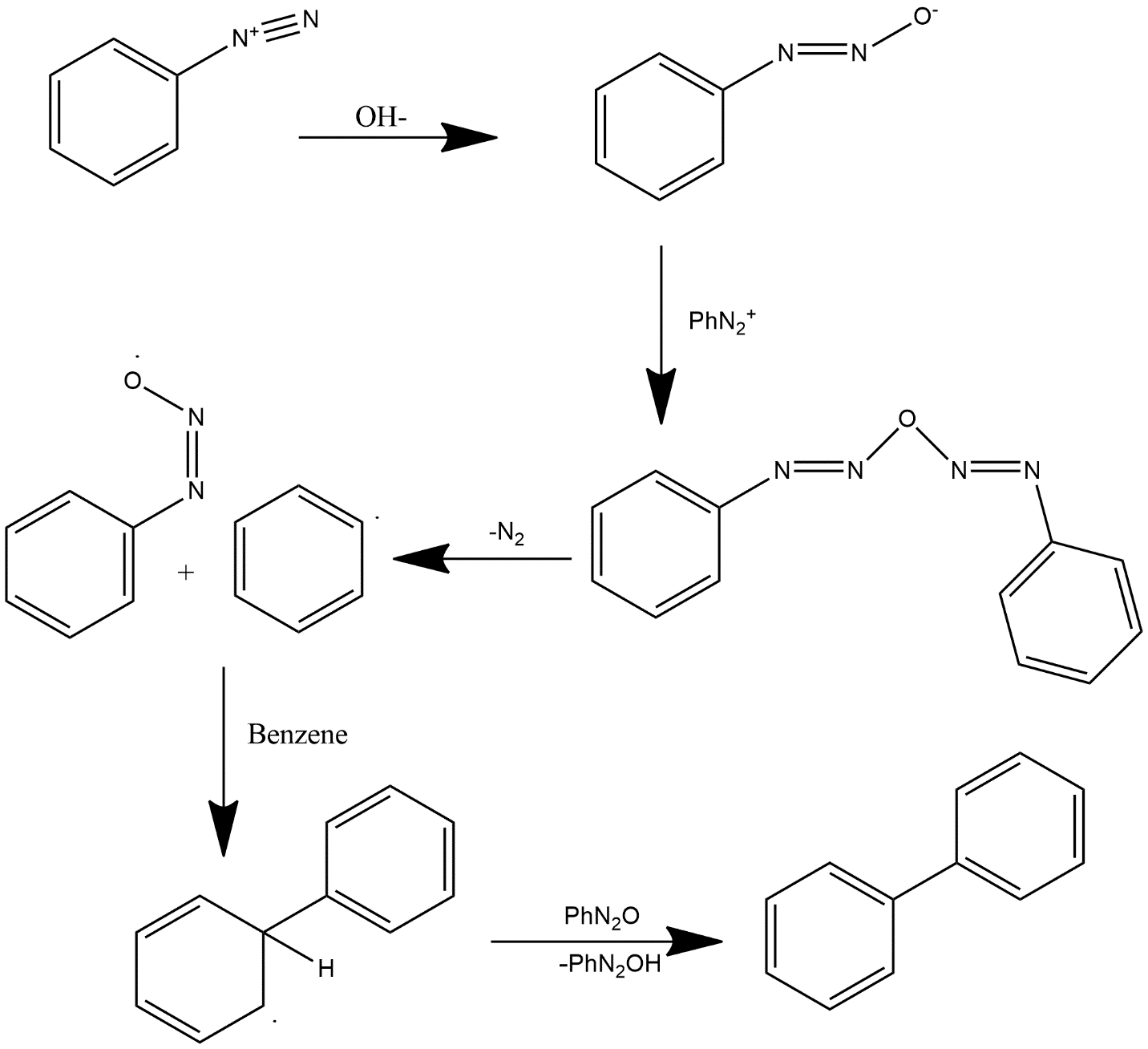
Explain Gomberg reaction with mechanism.
Answer
480.9k+ views
1 likes
Hint: Gomberg reaction is known by the name of Gomberg-Bachmann reaction as this reaction is discovered by two scientists known as Gomberg and Bachmann. It is an aryl-aryl coupling reaction with the help of diazonium salt.
Complete answer: Gomberg reaction is basically start with the starting reactant diazonium salt and diazonium salt can be explained as a group of organic compounds which shares a common functional group represented by
The mechanism of Gomberg-Bachmann reaction can be explained as follows:
1. In the first step diazonium salt derivative is reacted with hydroxide ion and forms diazonium oxide which further reacts with
2. After this loss of nitrogen gas is there which dissociates the molecule into two fragments out of which one is in the form of diazonium oxide and other one is a radical form of benzene.
3. After that diazonium gets reacted with benzene group and forms a biaryl group with the presence of aryl intermediate in this product i.e. H ion is present in this compound.
4. This H atom firstly gets reacted with
Mechanism can be shown as follows:

Note: Gomberg reaction is generally classified as coupling reaction; these are those reactions in which two fragments are joined together with the help of a metal catalyst. The most common coupling reaction is the cross coupling reaction.
Complete answer: Gomberg reaction is basically start with the starting reactant diazonium salt and diazonium salt can be explained as a group of organic compounds which shares a common functional group represented by
The mechanism of Gomberg-Bachmann reaction can be explained as follows:
1. In the first step diazonium salt derivative is reacted with hydroxide ion and forms diazonium oxide which further reacts with
2. After this loss of nitrogen gas is there which dissociates the molecule into two fragments out of which one is in the form of diazonium oxide and other one is a radical form of benzene.
3. After that diazonium gets reacted with benzene group and forms a biaryl group with the presence of aryl intermediate in this product i.e. H ion is present in this compound.
4. This H atom firstly gets reacted with
Mechanism can be shown as follows:

Note: Gomberg reaction is generally classified as coupling reaction; these are those reactions in which two fragments are joined together with the help of a metal catalyst. The most common coupling reaction is the cross coupling reaction.
Latest Vedantu courses for you
Grade 11 Science PCM | CBSE | SCHOOL | English
CBSE (2025-26)
School Full course for CBSE students
₹41,848 per year
Recently Updated Pages
Master Class 12 Business Studies: Engaging Questions & Answers for Success

Master Class 12 English: Engaging Questions & Answers for Success

Master Class 12 Social Science: Engaging Questions & Answers for Success

Master Class 12 Chemistry: Engaging Questions & Answers for Success

Class 12 Question and Answer - Your Ultimate Solutions Guide

Master Class 11 Economics: Engaging Questions & Answers for Success

Trending doubts
Draw a labelled sketch of the human eye class 12 physics CBSE

a Tabulate the differences in the characteristics of class 12 chemistry CBSE

Which one of the following is a true fish A Jellyfish class 12 biology CBSE

Why is the cell called the structural and functional class 12 biology CBSE

Differentiate between homogeneous and heterogeneous class 12 chemistry CBSE

Write the difference between solid liquid and gas class 12 chemistry CBSE




